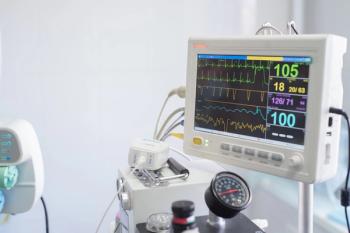
Prenatal mycotoxin exposure linked to lower birthweight
A new study finds that exposure to mycoestrogens during pregnancy may reduce birthweight and impair placental efficiency, with climate change expected to increase exposure risks.
Adverse impacts on placental function leading to increased odds of lower birthweight may occur following prenatal exposure to mycotoxins, according to a recent study published in Environmental Health Perspectives.1
Health implications of myoctoxins
Mycotoxins are damaging substances produced by mold and include zearalenone (ZEN), which has estrogen-like activity. By mimicking estrogen, investigators hypothesized that ZEN, also known as mycoestrogen, may disrupt vital biological processes associated with pregnancy, such as gestation.
“Our findings emphasize the need for greater awareness of mycoestrogen exposure and its potential impact on maternal and fetal health,” said Zorimar Rivera-Núñez, PhD, assistant professor at the Rutgers School of Public Health and lead author. “This research underscores the importance of considering genetic factors when evaluating environmental exposures and their health effects.”
Placental sampling
The study was conducted to assess the impact of prenatal mycoestrogen exposure on perinatal exposure.2 Participants included pregnant individuals aged 18 years with a singleton pregnancy under 14 weeks’ gestation, no known psychiatric illness or substance abuse, and able to communicate in English.
Patients with major endocrine disorders, high-risk pregnancy, or major substance abuse were excluded from the analysis. Questionnaires and biospecimen collection were completed during study visits occurring each trimester.
Standard protocols, involving a flap technique to sample fresh core villous tissues, were used to obtain placentas from participants within 1 hour of birth. Afterward, the tissue was cut into 2 halves, washed in diphosphate-buffered saline, and stored in a cryovial placed in liquid nitrogen.
Analysis of mycoestrogens
Mycoestrogen assessment was performed with a limit of detection of 0.005 ng/g tissue. Quality control sample analysis was repeated on 2 different days to determine reproducibility.
Trained reviewers extracted birth weight and birth length data from electronic medical records. A standard pathology department scale was used to measure placental weight after trimming. Infant birth weight was divided by placental weight to calculate the fetoplacental weight ratio (FPR).
Placental efficiency measurement
FPR is used to determine placental efficiency. Fetal growth restriction may be indicated by a low FPR, while insufficient placental growth or diminished placental reserves may be indicated by a high FPR.
Placental BCRP/ABCG2 was genotyped from child buccal swabs obtained at birth. After membrane extraction, investigators performed quantitative targeted absolute proteomics. Covariates included age, previous live births, education level, race and ethnicity, smoking, body mass index (BMI), marital status, and gestational age at birth.
Participant demographics and outcomes
There were 271 participants aged a mean 29.1 ± 4.6 years and with a mean early pregnancy BMI of 27.9 kg/m2 ± 7.1 included in the final analysis. Of participants, 66% were parous, 63% White, 89% non-Hispanic, 56% married or cohabiting, and 64% with post-high school education.
A mean infant weight of 3,388 ± 500 g and length of 51.6 ± 2.7 cm was reported at birth. Mean placental weight and FPR were 416.6 g ± 84.3 and 8.3 ± 1.3, respectively. Reduced ABCG2 421A function was reported in 17% of participants.
Key Findings on mycoestrogens and birth outcomes
ZEN was reported in 59% of placental tissues, making it the most common mycoestrogen. A weak inverse association was reported between mycoestrogens and birth size in adjusted models, with a 1 log unit increase in total mycoestrogen concentration linked to a reduction in birth length by −0.14 cm and birth weight by −22.6 g.
All mycoestrogen measurements were associated with placental weight, with increases ranging from 8 to 13 g. However, negative correlations were reported with FPR, including a reduction of -0.19 for ZEN.
A more significant inverse association was reported between mycoestrogens and infant size in patients with 421A expression, with a reduced infant birth weight of -113.5 g for a 1 log unit increase in concentrations among this population. In comparison, the reduction was -5.9 g in those with wild-type 421C expression.
Implications
Overall, the data highlighted an association between increased prenatal mycoestrogen exposure and reduced placental efficiency, leading to reduced newborn size. Investigators concluded there is a need to assess how climate-related mycoestrogens impact human reproductive health and development.
“We expect mycoestrogen exposure to increase worldwide due to climate change, as the presence of mycoestrogens in crops increases with warmer temperatures,” said Rivera-Núñez.1
References:
- Researchers examine the impact of mycoestrogen exposure on birth outcomes. Rutgers University. June 16, 2025. Accessed June 20, 2025. https://www.eurekalert.org/news-releases/1087673.
- Rivera-Núñez Z, Kinkade C, Brinker A, et al. Mycoestrogen exposure during pregnancy: Impact of the ABCG2 Q141K variant on birth and placental outcomes. Environmental Health Perspectives. 2025;133(5). doi:10.1289/EHP14478
Newsletter
Get the latest clinical updates, case studies, and expert commentary in obstetric and gynecologic care. Sign up now to stay informed.
















